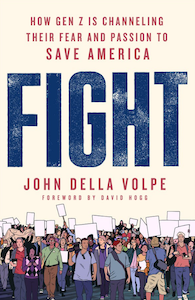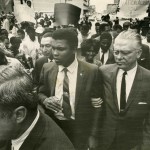Talking Bout My…

I ran across an innocuous-yet-aggravating-anyway argument on the Twitter machine this week.
Naturally, because I am a reserved and mature individual – a proud member of Boomer IITM – I waded right in and reasonably informed the lot of these GenXYZ whiners that their claims and counters were all pure bollocks, that the whole idea of individuated GTMs was a load of horse pucky contrived by consultant types who wished to sell their keen genius to gullible commercial enterprises who would leverage this deep insight in hopes of extracting hard earned cash from downstream marks more credulous than themselves. So grow up, ya damn punks.
Whereupon my hard-earned insight was met with a volley of contumely. Can you imagine? Call me Cassandra.
In one of my earlier incarnations c.1995-2015, I played dress-up as a marketing savant, the better to bring home the proverbial bacon. This often meant suffering endless presentations on how best to move product by targeting the characteristics of one GTM or another. A shapeshifting farrago of bullshit spun from a few malleable observations, the knowledge gleaned is of a piece with clickbait listicles and articles that purport to tell us how *WE* feel about some prevailing trend/crisis/fad, and the seven weird tricks we can use to get rich/find love/forestall death/&c.
Imagine the scene: One or more (tag team presentations were the rage for a while, until these fell from favor in response to the keen realization that one dancing bear was cheaper than two) experts would offer compelling arguments as to which GTM we should be paying attention in that moment, and how we might craft our message to best emphasize our sincerity to whichever GTM held the greatest cash extraction potential at any given moment. Here we were assured that Cohort A responds to such and such, while Cohort B is completely different, except for those ways in which they are exactly the same, and that the most important thing to remember is the critical importance of authenticity in our efforts to ensure this or that GTM that our product/organization most truly reflects the closely held values that are paramount to whichever GTM (or GTMs) we sincerely aim to convince.
My memory is rife with garrulous women (almost always women) bedecked in shoulder padded blazers and decorative scarves, punctuating their exhortations with an array of dynamic hand gestures and zesty half-turns of their upper torso.
Naturally, I was eager to report back to my superiors the critical intel I had derived on the company dime, the better to justify my ongoing existence in the corporate ecosystem. I catalyzed a broad range of strategic initiatives to instantiate and effectuate win-win scenarios to actualize upsides to all inspirited parties. Many a noun was verbed in this bedazzling display of communicational derring-do.
At root, GenTM discussions inevitably assert a we/they formation: “They” are like this, or “We” are some such way. It asserts a claim – often, an accusation – based upon broad generalization, not unlike “Blacks are like” or “soccer moms are like” or “Lithuanian hockey players are like”. Suffice to say that any message that leans on such tired generalizations is safely disregarded. At best, it is a transparent blandishment to detach you from your money. At worst, it is supplemental fuel for the slice/dice alienation machine that dominates modern discourse.
This categorization is typical.
Generation
Gen Z
Millennials
Gen X
Boomers II
Boomers I
Post War
WWII (The Greatest)
Born
1997 – 2012
1981 – 1996
1965 – 1980
1955 – 1964
1946 – 1954
1928 – 1945
1922 – 1927
Current Age
10 – 25
26 – 41
42 – 57
58 – 67
68 – 76
77 – 94
95 – 100
If nothing else, the notion that groups spanning 15 years in age (Gens X, Millennial, and Z) share meaningful commonality is transparent poppycock. It is silly to suggest that a Gen X born in the late 60s has more in common with one birthed in 1980 than with an early-60s Boomer baby. Or that a Millennial born in 1995 is more akin to one sprung in 1981 than with a Gen Z popped out in 1999. Despite the boatloads of survey metrics and sales figures and so on, conferring personality traits on a vast population based on date of birth is nothing more than another flavor of astrology, based on year rather than month, propped up by whatever anecdata are at hand that can be twisted to satisfy an ordained outcome.
I find it interesting that the so-called Greatest Generation spans a slim five years, a timeframe that might provide some useful insight but complicates the life of the erstwhile marketing slick in search of the most commercially motivating least common denominator.
I was surprised to discover that the Boomer cohort has been split into Boomer I and Boomer II aggregations, the original 18 year span clearly too broad to explain anything. Alas, the 17-year PostWar group has not been afforded such fine grained definition, likely because i) population dwindling and ii) that cohort has never been seen as ripe for plucking as the Boomer-and-beyond crowds. Well, until Fox News came along, anyway.
Perhaps it is the inevitable dwindling of the first Boomers that led the market-minded savants to split the target audience. Whereas early Boomers are now the prime demographic for things like Hoverround scooters, reverse mortgages, and over-heated conservative rage monkeys, the late Boomers are seen as both flush and determined to buy ALL the toys, while also spending freely on pharmaceuticals big and small to forestall the inevitable dwindling that stands in wait. (Or so the profiles would lead us to believe.) Oh, yeah. Big on the rage monkeys, too.
Boomer II has also been dubbed Generation Jones, another gambit by marketing sharps to turn a buck
Despite the popularity of “OK Boomer” memes, it appears at long last that us Boomers are no longer the generation most responsible for that gigantic shit show 2022 represents. Nope. The worm has turned. It’s those lousy Gen X and Millennial slackers are the ones to blame. If things are to improve, it is up to those stalwart Gen Z warriors to save the day.

In a recent column at LitHub titled “Can Generation Z Save America? (And Should They Have To?)“, this author demonstrates in a few hundred words the depth of this charade.
Should they have to? Should any generation bear responsibility for leaving the world in better condition than they inherited it? And is “saving America” really the most important problem facing the world anyway?
Then there is this trenchant insight.
The oldest Zoomers…are old enough to have voted for or against Donald Trump in two presidential elections.
Della Volpe, LitHub, 1/20/22
Golly. They are beginning to vote! That changes everything!
Sure, the majority of this cohort voted against the most abjectly unfit candidate this nation has ever seen. Gen Zers are on the whole more progressive than not, but not monolithically so; this is standard for any so-called “youth cohort” going back at least to the 60s. The “youth of today” is always going to upend the gameboard within the next election or three, you just wait. It just never seems to come about, and soon enough your GenTM is the target of the next generation’s ire and resentment.
The other Gen Zers, fully on board with marching authoritarianism, are not going away; if history is guide, their number will swell over time as the betrayals of becoming an adult under resoundingly inhumane social arrangements take their toll. As to the presumed permanence of Gen Z progressivism, I point to the legions of my cohort who peddled Revolutionary Worker tracts in the late-70s-early 80s, who marched against nuclear proliferation and the extremes of the criminal Reagan administration, and who are now as likely to be MAGAbots as anything.
The old Churchillian canard
No matter where one finds oneself on the trajectory of time’s arrow, there is and always has been a generation gap and two extremese of attitude towards the younger generation. It’s either “damn kids these days” or “the kids are alright”. My own view is that the young upstarts are damned fine, as fine a group of humans as you could ever hope to meet. At the same time, I recognize that a huge percentage of Gen Z is damaged, tormented, filled with self-doubt/loathing as many of my time were, with a considerable portion of rabid authoritarians, fascists, and neo-Nazis. In other words, not at all different now than any time since the U.S. became an imperial power.
Plus ça change, plus c’est la même chose.
From the agonies of the Depression and the sacrifices of WWII, to the soul-crushing conformity of the post-war era and the social upheavals of the 60s and 70s. From the specter of nuclear holocaust to the resurgence of purely corporatist governance around the globe, environmental decline, climate change, and so on. Feudal serfdom, Black Death, Christian Crusades and Inquisitions, rampant disease, starvation, gruesome wars, &c. Things have been Fucked Up and Shit (FUASTM) for as far back as we can see.
But it seems that every generation must see their own struggles as sui generis, as somehow worse than it ever has been before in the history of forever. In this, they are correct. And also wrong and missing the point.
The struggle has been real for as long as time is recorded.
History is a catalog of FUASTM, with a broad exemption for the select few throughout history who lord it over the masses. The ability of the select to maintain their status has always rested upon an arsenal of carrots, carefully bestowed to instill ambition among the lessers, and sticks, indiscriminately wielded to instill fear among same. But the greatest weapon the top dogs have is the ability to create divisions among the mass of people whose core interests diverge sharply from the swells and overlap almost completely with each other. Dividing the underclass into subsets, and then turning them one upon the other, loads the hard work of maintaining an empire on those upon whom the empire lies heavy.
Check the subtitle of that LitHub article. “John Della Volpe Wonders If Demography Can Save Democracy” is a forehead slapper typical of the genre.
No. The answer is no. Just. Fucking. No.
Demography has no agency, no collective will. It is mere counting and sorting, a chimera propped up by statistical and anecdotal evidence of questionable utility. But sure, let’s set an impossible expectation and divert the polity from recognizing that, if democracy is to be saved, it will require a epic display of communitarian effort and solidarity across all ages, genders, races, and classes. “Let those kids handle it” won’t cut it, just like we can’t count on Black women to save us, or The Squad, or Bernie, or or or….It is up to all of us.
Generational definitions are manipulations, several among many that get repeated enough to become ‘common sense’. These flatteries, designed to appeal to base emotion, are fundamentally tools for moving widgets. But they also serve a more pernicious purpose as part of the rampant flattening of citizenship and community.
Too many of us appear desperate to be told who and what we are, eager to accept the kind of labeling nonsense that the GenTM hucksters serve up in shiny packaging. But we also see it elsewhere: in party affiliation or devotion to one or another sportsball (game or team). In our identification with one religion over another, and the antagonisms that arise even (especially) when the differences are so slight. Vax and anti-vax. Regional identification and prejudice. Stones or Beatles. Paul or John? There is not end; the quark will never be found.
The impulse to belong to one tribe or another may be the most dangerous infection we face today, and unlike COVID there is no vaccine. The slice and dice machinery is uncanny in its ability to ferret out fissures. It makes us all less appreciative of both the individual differences that make each member of any tribe unique, but to the actual, meaningful commonalities we share within and without our alleged tribe. This reliance on conferred identity flattens, makes us numbingly similar under the guise of superficial difference. And comfortable in our received identity, we begin to see significant cultural variations as threats to be defended against. And here lies the real danger, as fear turns to aggression and of fantasies of dominance and purity.
Writer Ted Gioia is best known for his music criticism and histories. (His Music: A Subversive History is a real banger for anyone interested in the social. Highly recommended.) But on his blog, The Honest Broker, he often branches off into other realms. Today, as I was struggling to wrap this essay, he published a piece about philosopher Byung-Chul Han that included this observation:
“It was once fashionable to opt out from the groupthink and reconstruct your own life in a free-spirited or even openly dissident way. But the groups and power brokers have gotten less tolerant of dissent nowadays, and it’s harder to find a space for self-invention outside their purview.”
Ted Gioia, The Honest Broker, 1/24/22
I cannot fully agree. The ‘groups and power brokers’ have never been particularly fond of self-invention beyond narrowly prescribed guardrails. Self-invention and self-realization are threats to the prevailing order, and the machinery in place to set the seal on bland conformity is relentlessly efficient. And pretty much anything that feels transgressive in one generation (long hair, tattoos, rainbow hair coloring, clothes made of U.S. flags) will be quickly flattened into yet another commodity that trades its signification as rebellion for that of consumer obediance.
At root, this is my objection to the GenTM industry’s role in a broader campaign to determine who we are so we don’t have to put in the effort. It is a mechanism of the Great Flattening machine – an array of large and small instruments ranging across political parties, bread and circus sport extravaganzas, music streaming algorithms, blockbuster movie hegemony, Wordle, TikTok influencers, &c. – that aims to turn us into reliable and docile consumer drones.
When we all do and like the same things, this slouching beast declares, we will all be happy.
Then we can all fall in line for authoritarian rule, because at least the trains will run on time while we all watch the Super Marvel Universe Bowl together.
_________________________________________
DISCLOSURE: If you click on a book recommendation here it will take you to the Indiebound website where you can purchase the book from your favorite independent bookseller. I2B will get a slim cut of the action if you buy when you click over from this site, and it is better for the author and the bookstore, too. And it’s way better than sending your money to Bezos.






